Talk To Me In Korean
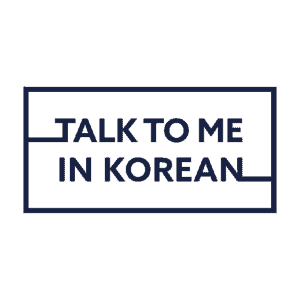
Summary
Talk To Me In Korean (TTMIK) offers audio, video and text materials for Korean learners of all abilities. They have a variety of free and paid courses available. The main course is well laid out and the supplementary lessons are all great quality offering some really fun and interesting ways to learn. However, there aren’t many ways to practice what you’ve learned, as such, it’d be best used alongside other resources and not as a standalone course.
The video lessons have high production value and can be fun to watch.
Not enough material or opportunities to practice to only rely on TTMIK.
A ton of free content!
I Like
- Some of the courses are really creative and offer an interesting way to engage with the language.
- The majority of the content, including the entire grammar course, is free.
- Wide range of materials for all levels.
I Don’t Like
- Learning can be too passive as you’re rarely asked to use the Korean you’ve learned.
- Some of the courses have pretty low educational value.
Price
$19.99/month or $10.19/a month when paying for a year
Since 2009, Talk To Me In Korean (TTMIK) has been servicing Korean Learners of all abilities with their creative learning resources.
Much of the content on the site is free to access, and over the past decade, they’ve continually added more resources, courses, and books.
There are some areas, however, where the website falls short and like all Korean resources, it’s always best when accompanied by other materials.
This is especially important as you’ll need to find ways to test and practice any of the Korean you learn with them.
This thinness also can also be seen in some of their supplementary lessons.
Some of the courses outside the main grammar series of lessons feel much more like a Youtube entertainment channel than a language learning resource.
The main grammar courses are really lacking in tools the learner can use to help them produce the language. But, after all, they are free so we can’t complain much about that.
Talk To Me In Korean has, on a few occasions, really nailed the learning-entertainment balance. However, it has also produced some courses which are bordering on useless.
For this review, I focused on the free resources available, so it’s definitely possible that some of the paid courses have more depth to them. In fact, I would be pretty disappointed if that weren’t the case.
With that being said, the quality of production and range of material is encouraging, especially for a site that gives so much material away for free. But, just like with any course, it’d be best used alongside other resources.
This review will take a look at what Talk To Me In Korean does well, and should it fall short offer an alternative, so you can get the most out of your learning and find the best way to learn Korean.
Getting Started
Once you arrive on the TTMIK home page and get signed up, you’ll be taken to the ‘Learning Center.’
From here you’ll be prompted to take the online level assessment.
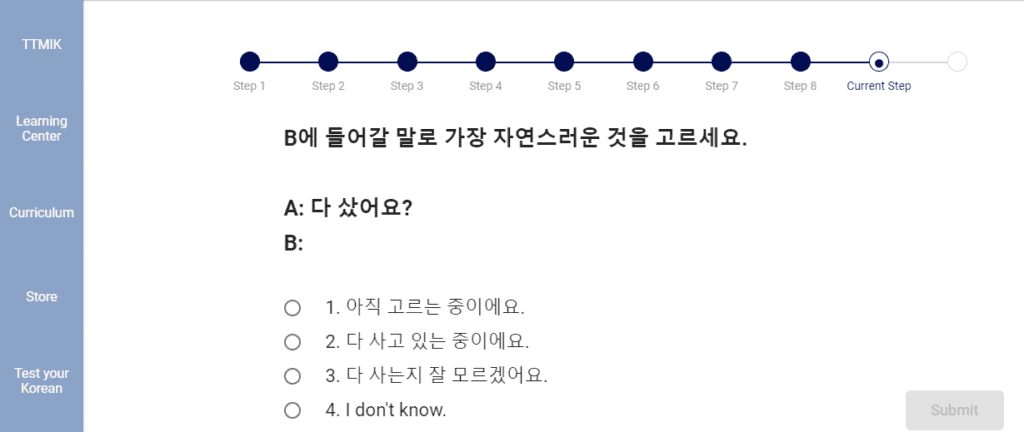
The test involves 10 steps, each containing 3 different questions.
Naturally, the questions get progressively harder as you progress and all of them are multiple-choice involving three possible answers and one ‘I don’t know’ option.
The test takes no more than 5 minutes, can be retaken at any time, and can be skipped if you just want to get straight into your learning.
Once you have finished the test you’ll be brought back the Learning Center. Here the site will offer some suggested courses you can begin with.
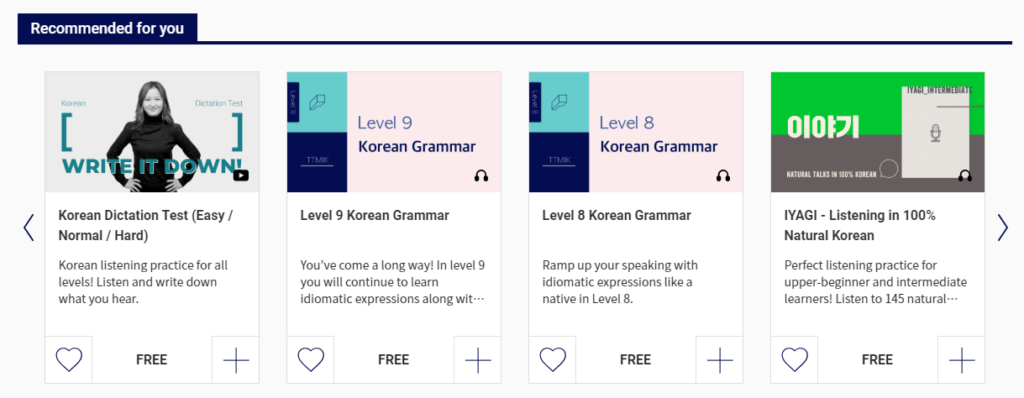
Also in the Learning Center, you can find the courses that you are currently taking, offers for deals from TTMIK, along with any lessons you’ve bookmarked.
If the recommended courses aren’t what you’re after, then by going to the Curriculum section, you can access all of TTMIK’s content, both free and paid. They have a very handy tool for you to find exactly what you’re looking for.
Once you’ve added a course, head back to your Learning Center, click on the play button for the lesson you’ve added and get started with your Talk To Me In Korean adventure.
Platform Structure
Starting with the recommended courses is a good way to begin your studies, but all courses are different and so there may be some information in other, lower leveled courses you may have missed.
To access the rest of the material on the website, click the curriculum button.
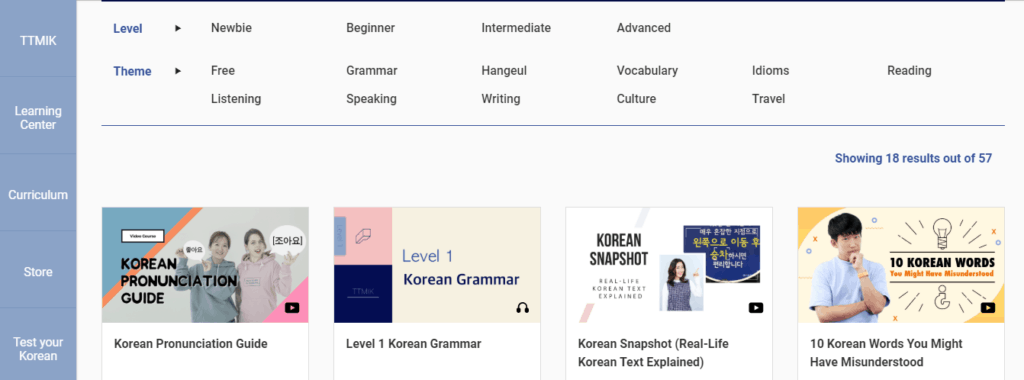
Once on the curriculum page, you’ll be able to access the 50+ courses available through the site, of which over 30 of them are free.
The website has a handy search tool to navigate through the courses and find the ones you are most interested in. Simply click on any level or theme and it will filter the results for you.
Almost all of the free content on the website can be split into two categories. The main grammar course and supplementary material.
The supplementary material can be roughly broken down again into the following categories – assessment, word/phrase information, and infotainment.
The main grammar course actually contains 10 separate courses all with around 30 lessons in them.
It is the grammar segment of the website taking you from the absolute beginner level up to lower advanced. It’s fairly easy to follow starting at hangul and moving up to level 9.
The hangul section is pay to access so you may be better off heading over to the SEEMILE Youtube channel, Howtostudykorean.com or using Memrise.
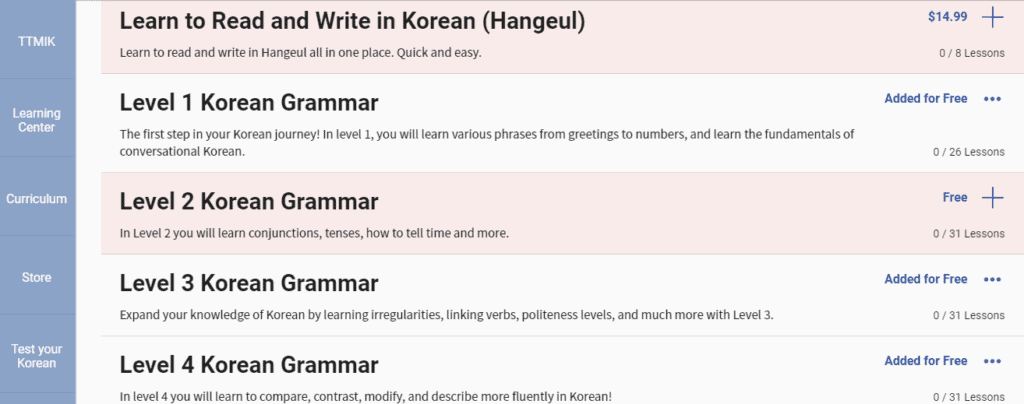
The second of these categories is the supplementary lessons.
These are much less straightforward and you will find yourself darting around, testing out a few things before you find something that you want to continue with.
If they were all equally useful then this would be less of a problem. However, some of the courses are much more entertaining than educational and although this may suit some learners, others may find it less helpful.
Although there is something on this site for everyone, it can still feel like the content is stretched a bit thin at times.
There may be around three or four useful free courses per level for you to choose from which means that Talk To Me In Korean would be hard-pressed to be anyone’s standalone course. For those looking for a course like that, I’d recommend 90 Day Korean.
Still, there are some really interesting and creative lessons available and especially for those learners who are looking for something to lighten up their study, then this site is great.
Main Grammar Course
The main content on Talk To Me In Korean is their grammar course.
It runs through levels one to nine (discounting the hangul course) each of which contain around 30 lessons for learners to work through.
It also has a familiar voice for those who are familiar with Koreanclass101 as Hyunwoo, one of the presenters, also works with Talk To Me In Korean
.
The grammar courses are all audio, podcast-style lessons and although they mainly focus on grammar, there are some other lessons in the main course to assist your learning.
These are:
- Word builder (starts at level 2)
- Sentence building (starts at level 4)
- Advanced situational expressions (levels 8 & 9)
- Advanced idiomatic expressions (level 8s & 9)
- Test your Korean (levels 2-5)
The grammar lessons all have a very similar, repetitive flow that begins with the presenters explaining what the grammar point for the lesson is, then giving some example sentences to demonstrate its use.
If it so requires they then go onto how it is conjugated for different formalities before finally going over any irregular conjugations.
There is also a brief description below the audio that goes over again what they did in the lesson. It gives a brief description of the grammar, then goes through all the example sentences alongside their translations.
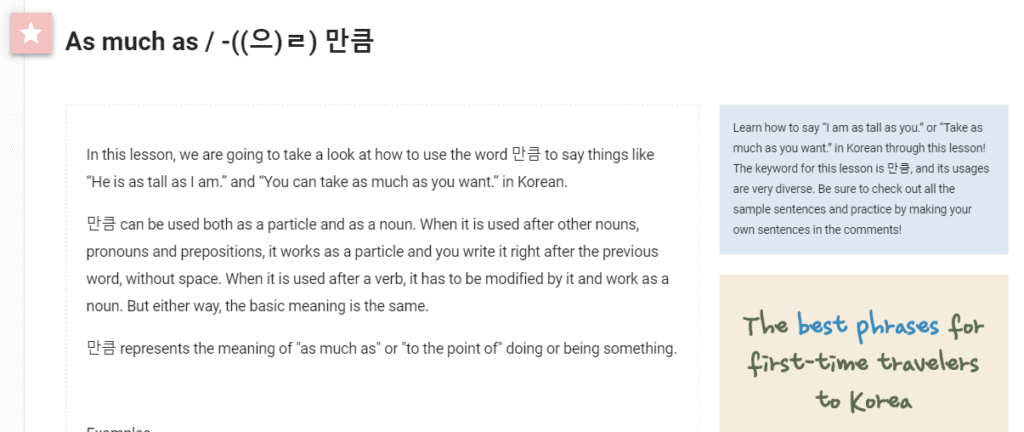
The grammar section was one of the earlier courses TTMIK developed and it’s starting to show its age.
It is very much in the lecture style of teaching and there is no way for you to practice the grammar short of going over the example sentences. Sites such as KoreanClass101 or How to Study Korean, with the more in-depth explanations and range of tools are much better suited, as long as you can find what you’re looking for.
The presenters also converse far too much in English at the higher levels.
Once you get to a certain level, Kyeong-eun (the female instructor) will refrain from almost all English but she speaks much less. Hyunwoo (the male instructor) speaks almost exclusively in English through all the levels and although he does curtail this at the higher levels, if the lessons were scripted better then they would be able to maximize the listeners’ exposure to Korean.
Once you have gone through the lesson and the write up at the bottom of the page there is an option for you to log the lesson as completed, download the MP3 of the lesson or the write up as a PDF.
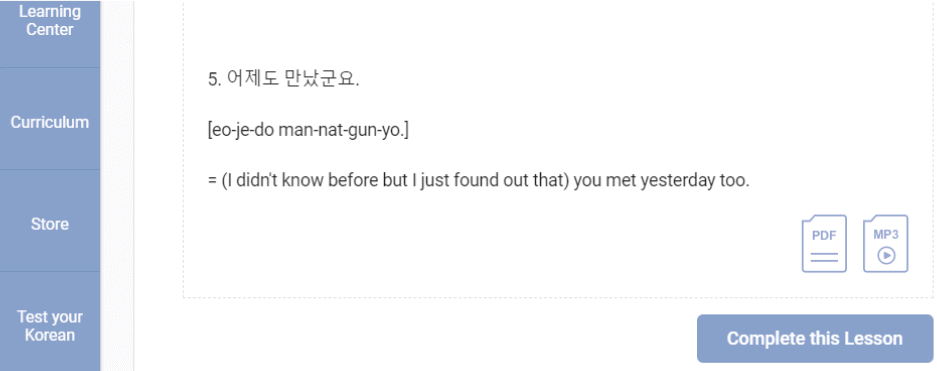
They do have a lot of grammar points for a lot of different levels and for those that like this style of learning then it may be a good option. It would be nice to have some tools to produce the grammar or listen to it in different ways as all lessons are laid out in the exact same way which gets very repetitive after a while.
With regards to the other lesson types that you would find in the main course here is a quick overview:
Word builder:
Starting at level 2 these lessons explain Chinese derived, very common Korean syllables. They teach you how certain words are built around them, what they mean and how they relate. Lessons are around 10 minutes long and consist of an explanation for the root syllable, then words that contain it. These are relatively useful as a lot of words are derived from these syllables so it can really help with trying to work out new words.
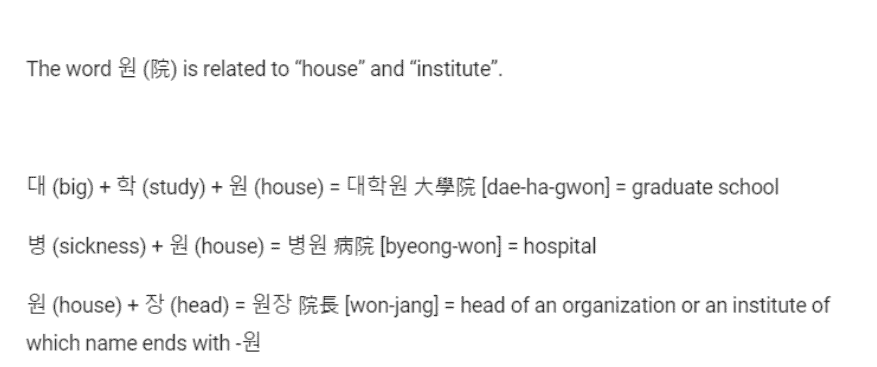
Sentence building:
This teaches you ways in which you can manipulate sentences and craft your own. Starting at level 4, these lessons begin with 3 separate sentences. The presenters go through each of them showing ways they can be changed and what those changes do for the meaning of the sentence.
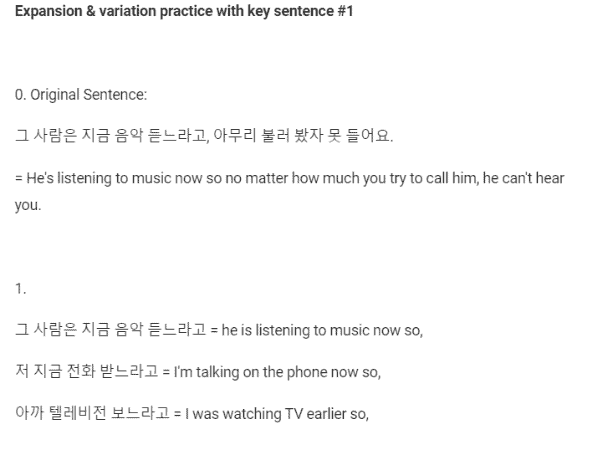
Advanced situational & idiomatic expressions:
Only available at the advanced levels, the presenters break down a word or phrase, whether it be idiomatic or situational, and explain it in more detail.
These are actually quite useful for those with a higher level of Korean as you would only really come across this information should you be living and working in a Korean environment. Lessons are around 10 minutes long and like the other lessons, are in a lecture format with some examples but with no way to practice yourself.
Test your Korean:
Finally, my favorite of the extra lessons is the test your Korean section. A simple 2 or 3-minute role play all in Korean that contains the grammar from the previous course. These are only available from levels 2 to 5 and only 1 per course. The translation is also available if you scroll down.
Supplementary Lessons
Aside from the main grammar courses, there are some supplementary lessons that you can access.
These lessons vary greatly in usefulness, though all are well made and of high-quality. They span across all the levels that Talk To Me In Korean offers.
These generally fall into three different types of courses – assessment, word/phrase information, and infotainment. Within each of these lesson types, there are some lessons that are very interesting and useful. However, there are also many that offered almost no learning opportunity and instead were more entertainment than education.
The lessons are a little sporadic and it can be difficult to know what the lesson is going to be like before you begin it.
Assessment (Write it down, Situational quiz)
These lessons are there to give you a chance to produce some Korean of your own. However, there’s not so much content, as is often the case when it comes to practicing your Korean on TTMIK.
If you are looking at finding a way to practice your Korean then italki would be a much better use of your time, with a lot of excellent teachers available to give you plenty of opportunities to practice at a low cost.
Also, TOPIKguide.com has some resources available if you’re aiming to take the TOPIK test in the future.
Talk To Me In Korean’s two courses in the assessment category are very basic.
The first, write it down, gets you to listen to some words or phrases and have you write them down as you hear them.
The second, situational quiz, has a video role-play where two people are interacting. They give you some sentences and you have to choose the correct one for the situation. Both have 10 lessons and are between 3 and 10 minutes long.
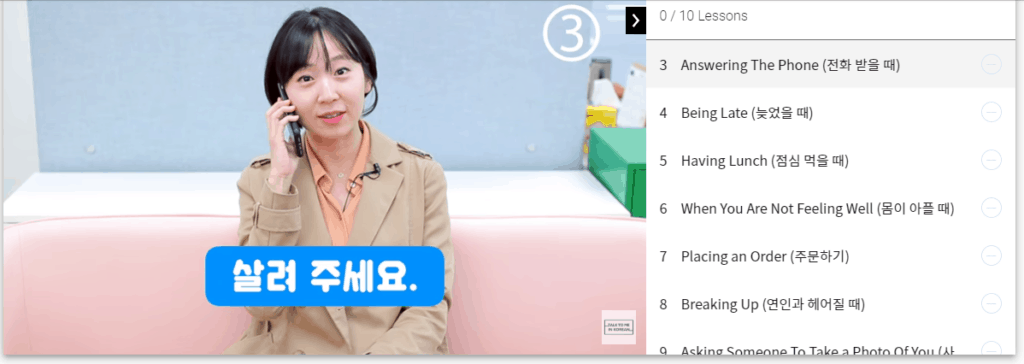
The website’s biggest weakness is the lack of ways for students to interact with the language. There are some good books the site offers but when it comes to free content there is next to nothing available.
If you like the idea of video role-play for conversation practice, Teuida is an app that uses voice-recognition technology to get you to actually participate in a conversation in a shockingly realistic way. You can use the coupon code ‘ALR003‘ to get the 3-month subscription for $18.99.
Word/phrase information
The second set of lessons are the word or phrase information lessons. These are the most common and are courses dedicated to a group of words, such as slang, verbs, commonly misused, essential phrases, etc.
All these courses are between 10 and 30 lessons long and have lessons lasting around 3-5 minutes. They spend the first part of the lesson either explaining or having you try to guess the meaning of the words or phrases and the next part of the video showing the meaning or how to use it.
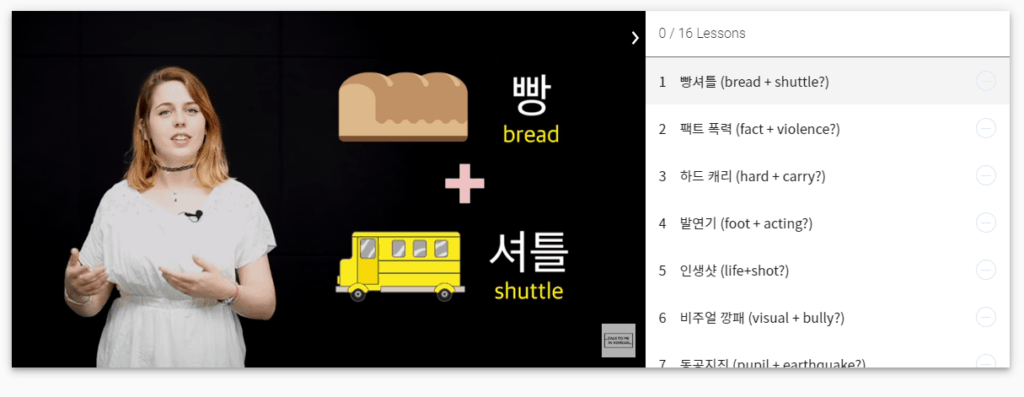
Most of the single word courses aren’t that useful. Time would be better spent learning new words through reading, podcasts, or other means. The phrases are a little more useful as they sometimes teach more idiomatic phrases or phrases you wouldn’t be able to figure out on your own.
These lessons are all really high quality, they have a YouTube entertainment channel feel to them and if that is something you enjoy, then give them a look. They are if nothing else entertaining and could be a nice way to break up study.
Infotainment
These lessons were by far the most interesting and useful and hit the balance perfectly between entertaining and educational. They are an assortment of interviews, drama breakdowns and cultural information that, although cater to the more advanced learners, are captivating enough as to be useful for everyone.
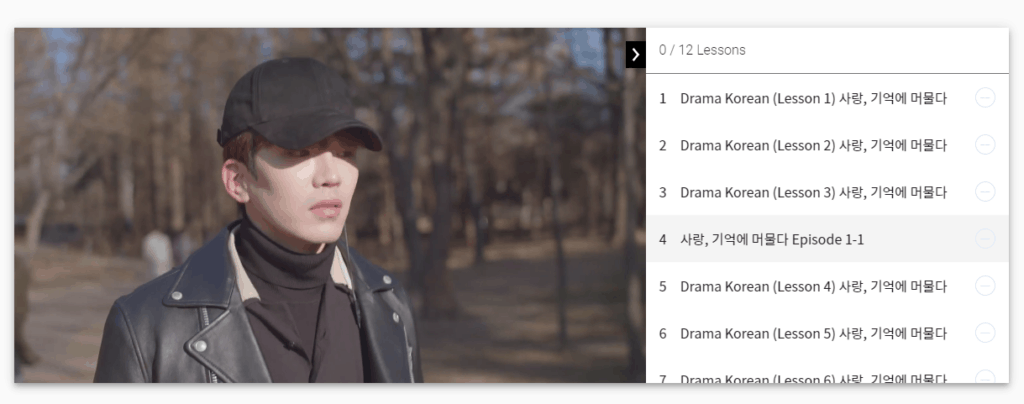
The lessons offer learners a chance to engage in Korean spoken by Koreans in a natural and chatty way through a variety of mediums. They also offer learners a chance to see how, should they continue with their studies, they could progress and levels they can aspire to.
The interview style lessons were all conducted involving at least one foreign learner of Korean. They would ask about how they were able to study, what made them learn and any tricks or tips they may have for other learners.
TTMIK also has a more fun interview style that centers around Koreans learning a foreign language. This means that the language spoken is far more natural and you have a way to learn about Korean slang in a more engaging way.
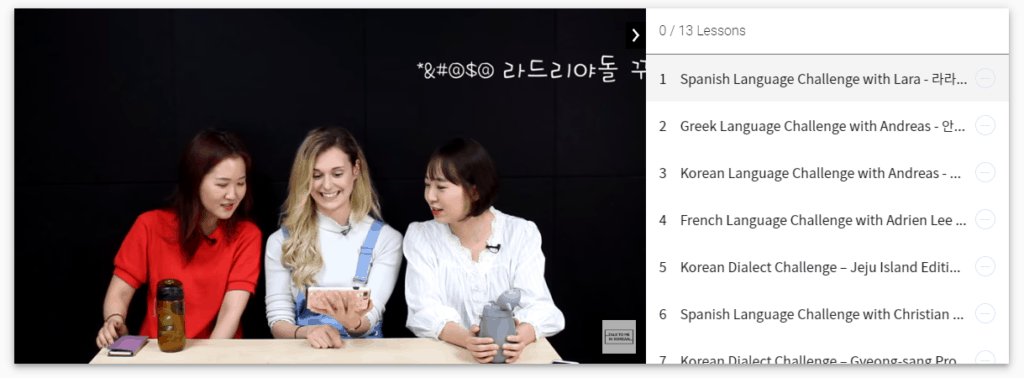
All of these lessons come with subtitles, so even if your Korean isn’t at the level required then you can still enjoy watching them.
Another set of lessons that fit nicely into this category is IYAGI and Korean Culture Talk. Both are based around situations that you may find yourself in, in Korea.
IYAGI is a 10-minute audio podcast that, solely in Korean, describes these situations and where you might find them.
Korean Culture Talk is a group of friends talking in a cafe setting. One is a foreigner and they are talking about cultural differences in Korea compared to the west.
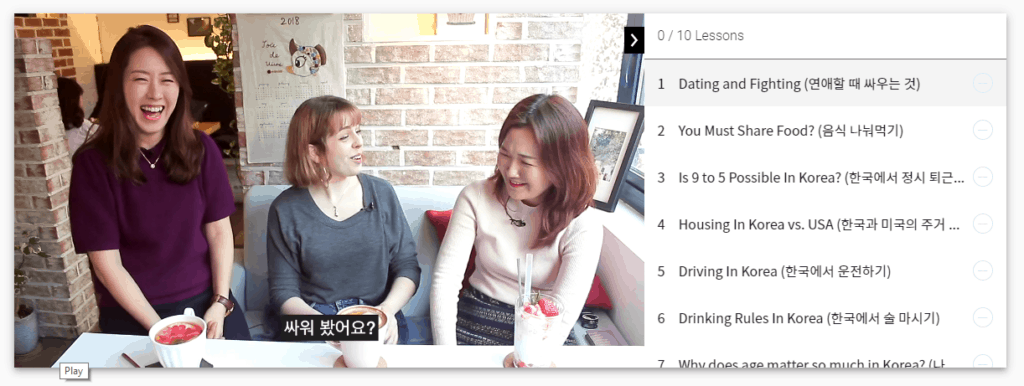
Both of these lessons are really great extended listening practice. They’re fun, engaging and offer a refreshing way to start listening to real Korean conversations. All translations are included either in the video or below the audio.
Plans and Prices
As stated previously, the majority of the content is free to access. However, the website does offer quite a few paid courses, books and ebooks for learners.
To find out the prices or if your interested in purchasing anything you can head to their store to take a look.
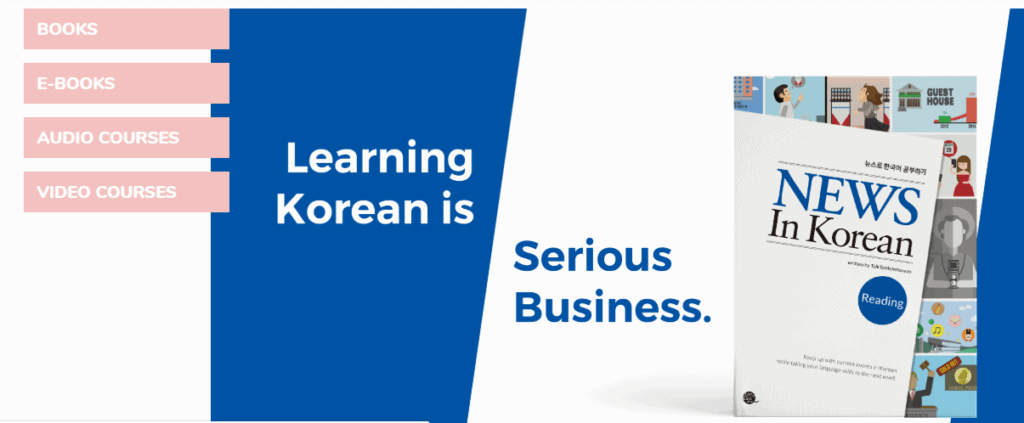
Prices of the materials all fall within these brackets:
Books: 27 books available, from $12 – $38 (packages also available)
eBooks: 14 available, $10 each
Audio lessons: 14 courses available, from $7 – $13
Video lessons: 12 courses available, from $5 – $25 (some need books)
Final Thoughts
Over the past decade Talk To Me In Korean has begun to move from a solely educational platform towards a more Youtube style, infotainment format. Although this has its flaws, if used well, it can be an invaluable resource to a language learner, providing an interesting way to interact with the Korean language.
There are some occasions where the website strays too far into the entertainment side of this see-saw causing some of the lessons to have less than optimal educational value. There are, however, some really great resources the website offers that will be of use to all levels.
TTMIK is sorely missing some way for learners to practice their Korean. There need to be more resources allowing learners ways to produce the language.
However, since this review focused on their free materials, I’m hopeful that the paid courses would be better for getting you to use the Korean you’ve learned.
To get more practice, you’ll likely need to use some other resources. This huge list of over 125 resources for studying Koreancan help you find some good ones.
While TTMIK isn’t perfect, the fact that they have so much free content is amazing. So, if you’re on a budget, this could be the perfect place to find some high-quality materials.
Even though I don’t think Talk To Me In Korean should be your primary resource for studying Korean, it’s definitely worth visiting and incorporating some of their materials into your study routine.

